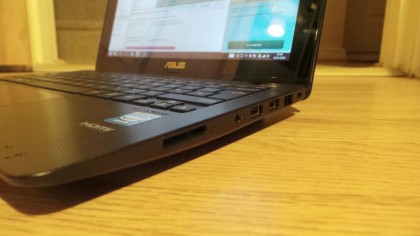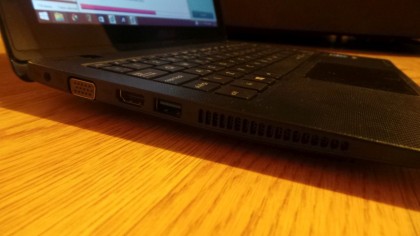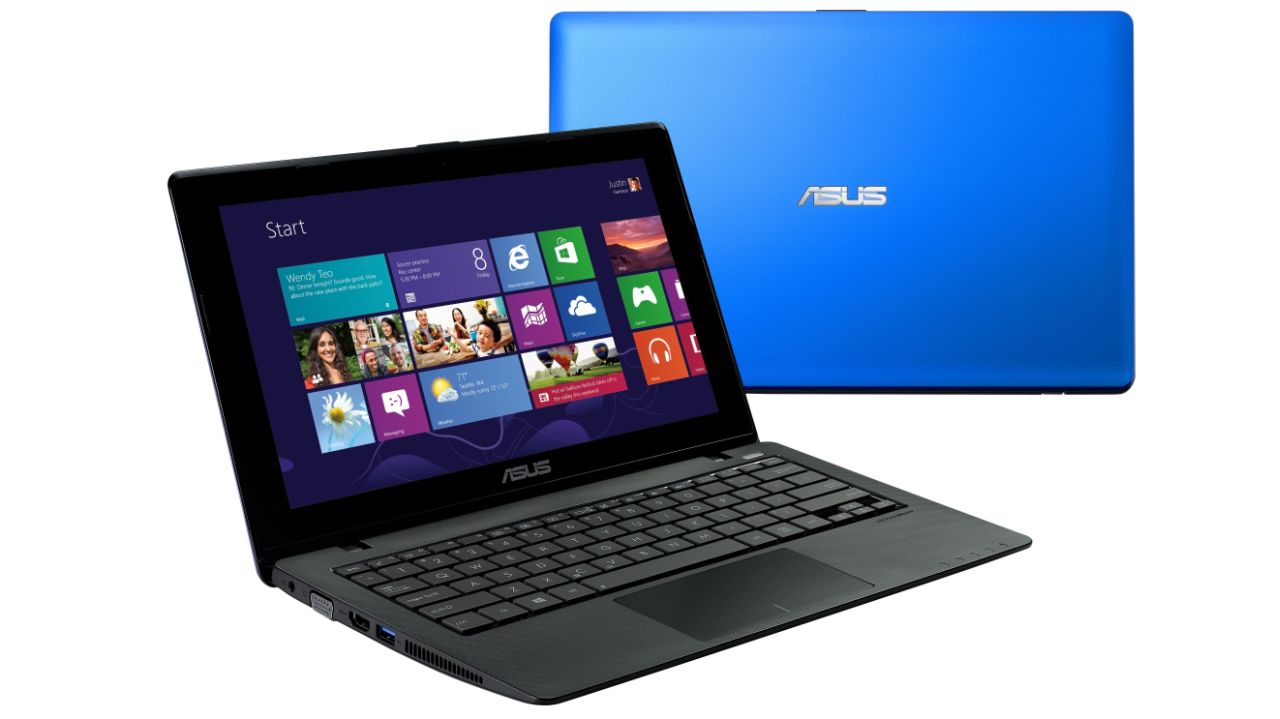Why you can trust TechRadar
Inside the X200MA, there's an Intel Celeron N2815, based on Bay Trail rather than on the much more powerful Ivy Bridge or Haswell architectures. That particular CPU has two cores, each with one thread; it clocks at up to 2.13GHz and has a TDP of 7.5W. As expected, it comes with an Intel HD graphics subsystem with a base frequency of 313MHz, overclocking to 756MHz when needed.
Since this is an entry level part, don't expect any bells and whistles, but as far as cut corners go, that's about it really. There's 4GB of DDR3L-1066 RAM (you can double that if you fancy it) and a massive 500GB hard disk drive spinning at 5400 RPM, partitioned in two.
The rest of the feature set is actually very good for a device in this price bracket: there's a card reader, a webcam, 802.11n Wi-Fi (but no Bluetooth), a D-Sub and HDMI port (pretty impressive), a combo audio jack, an Ethernet port and three USB ports (one is USB 3.0 and that can charge a device when in standby).


A pair of tiny speakers powered by Asus SonicMaster sound technology, a 3-cell, 33Whr battery, 5GB of online cloud storage for three years and Windows 8.1 (64-bit edition) round off the specification list.
Unsurprisingly the X200MA is laden with Asus applications like WebStorage and LiveUpdate which tend to eat away available resources – disabling them at startup will make things better although you may lose out on functionality.
For some odd reason, I couldn't get the laptop to fully charge. The battery gauge remained stuck at 96%, although battery life was good as it managed to score 882 on PCMark 8's battery test (lasting almost five and a half hours). However, the three main scores (Home, Work and Creative) were far behind the competition at 899, 1271 and 644 respectively.
This means that the X200MA could be perceived as a slouch but everything is relative. In terms of raw performance, the PassMark benchmark shows that it's up there with the likes of the (first-generation) Core Duo T2500 and the Core 2 Duo U9300, mainstream processors that powered mainstream laptops not so long ago.
Verdict
Does the X200MA represent the renaissance of netbooks? We doubt it. Is it one of the better affordable laptops out there? Certainly. At £199 at Ebuyer (about $300, AU$370), it remains the cheapest touchscreen display laptop we've ever seen, and the fact that it packs so much for that price bodes well for the future of the Vivobook brand.
We liked
The X200MA is solidly built, packs ample storage and system memory, and offers a surprisingly good array of connectors including the still-popular D-Sub. It has a touchscreen, decent battery life, a tiny power adaptor and an equally tiny price.
We disliked
We'd gladly swap some of that hard drive space for a more powerful processor (and graphics subsystem) but that's unlikely to happen. The lack of Bluetooth is a let-down, as is the keyboard quality. The display could be slightly better but that's probably asking too much for a laptop that costs the same as an Apple iPad mini tablet.
Final verdict
Just make sure that your expectations are adjusted accordingly and that you don't believe you're getting a laptop that can play the latest games. Intriguingly, the X200MA would make an interesting (and potentially more powerful) Chromebook with a lower outlay compared to its bigger brother, the C300MA.
Alternatively, have a look at the Acer Travelmate B115 which costs a bit more but has Bluetooth and a faster processor.
(Note: The laptop reviewed was provided by Ebuyer and at the time of writing, the retailer was giving away a free laptop bag, mouse and an 8GB USB drive with the product.)

Désiré has been musing and writing about technology during a career spanning four decades. He dabbled in website builders and web hosting when DHTML and frames were in vogue and started narrating about the impact of technology on society just before the start of the Y2K hysteria at the turn of the last millennium.
